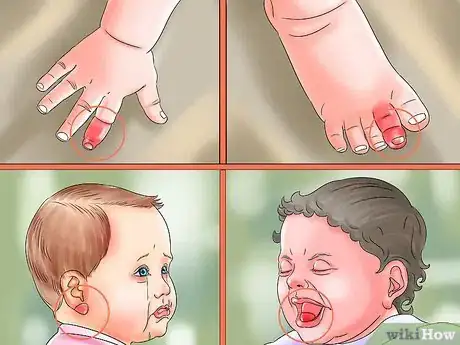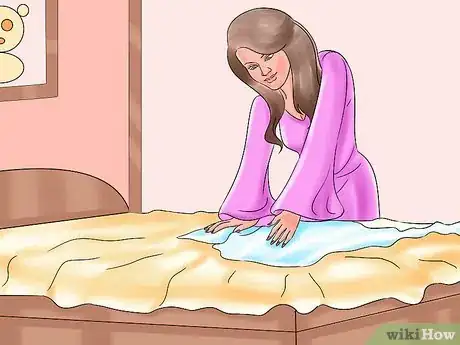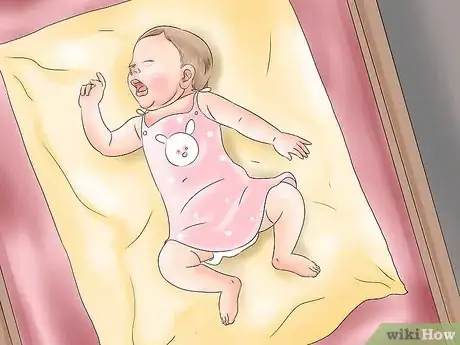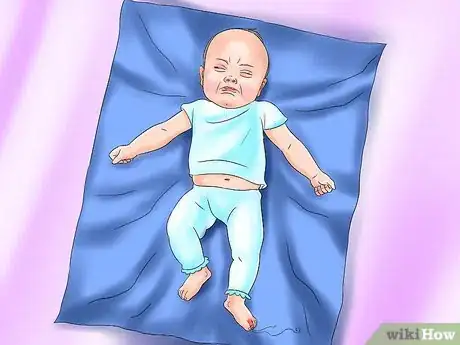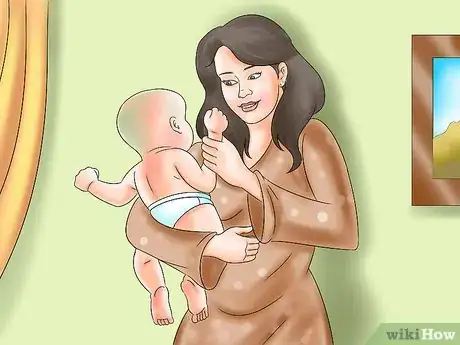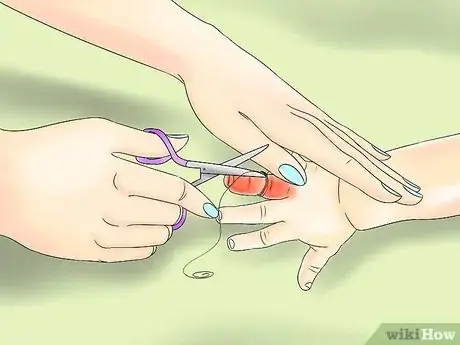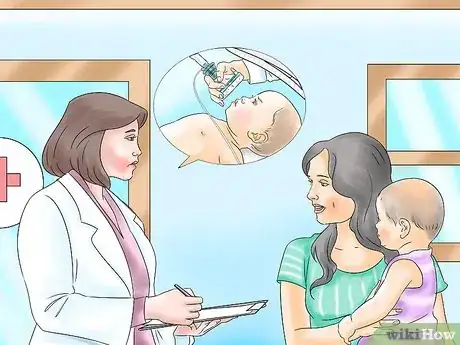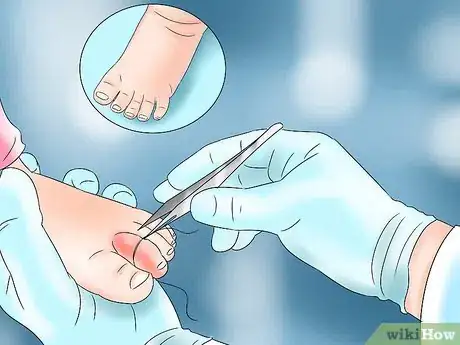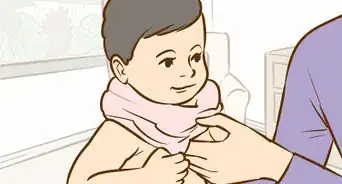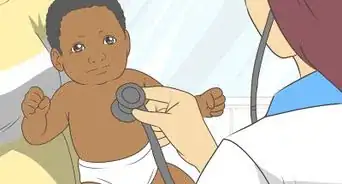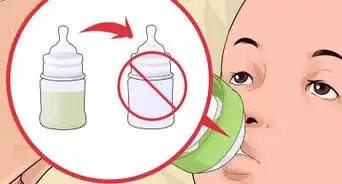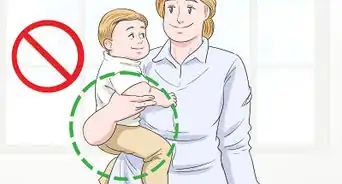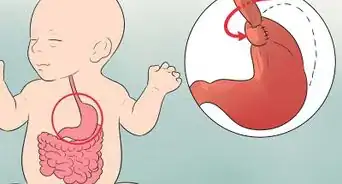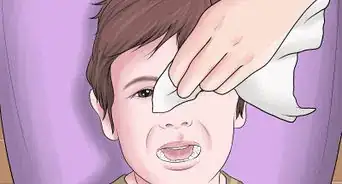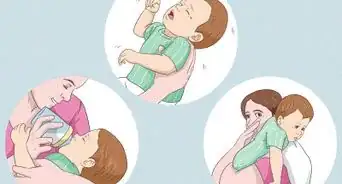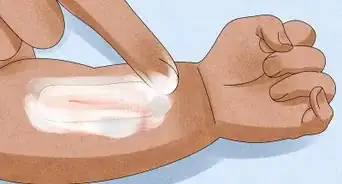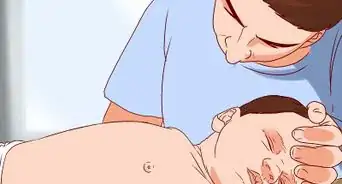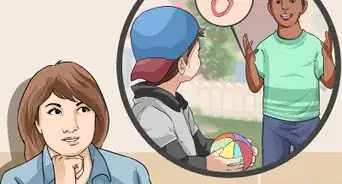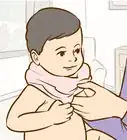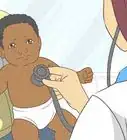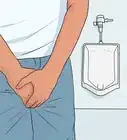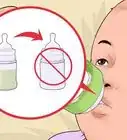This article was co-authored by Laura Marusinec, MD. Dr. Marusinec is a board certified Pediatrician at the Children's Hospital of Wisconsin, where she is on the Clinical Practice Council. She received her M.D. from the Medical College of Wisconsin School of Medicine in 1995 and completed her residency at the Medical College of Wisconsin in Pediatrics in 1998. She is a member of the American Medical Writers Association and the Society for Pediatric Urgent Care.
This article has been viewed 18,016 times.
A hair tourniquet is when a strand of hair gets wrapped around a baby's extremity in a way that potentially endangers that body part by cutting off circulation. The best way to prevent hair tourniquet syndrome is to keep your baby's environment clean, to monitor for concerning signs or symptoms, and to remove any hairs you notice in the home environment as soon as possible. If your baby has a more serious hair tourniquet that cannot be removed at home, it is important to seek prompt medical attention to prevent long-term damage from hair tourniquet syndrome.
Steps
Monitoring For Concerning Signs or Symptoms
-
1Understand what causes hair tourniquet syndrome. Hair tourniquet syndrome is most common in the first four months of your baby's life. This is because it is during this timeframe that women may inadvertently lose more hair following pregnancy. This is related to the changes the body is undergoing as it returns to its normal state following pregnancy.
- A baby can get hair tourniquet syndrome from repetitive motion in a confined space where there is hair present.
- For example, a baby may get a hair tourniquet on a finger after having his hands in mittens.
- A baby may get a hair tourniquet on a toe after having his feet in confined pyjamas that cover not only the legs but also the feet.
-
2Be aware of the most frequent locations for hair tourniquet syndrome.[1] Hair tourniquet syndrome is when a piece of hair gets wrapped around an extremity or body part in a way that progressively cuts off the circulation to that area.
- The most common locations for hair tourniquet syndrome are the penis in boys (accounting for 44% of cases), and the toes (accounting for 40% of cases).
- The fingers account for 8.7% of cases, and 6.8% of cases are at other sites — these include the wrist, the scrotum, the tongue, the vaginal labium, the ear lobe, the umbilicus, or the nipple.
Advertisement -
3Keep your baby's environment clean. One of the key preventative strategies for hair tourniquet syndrome is to ensure that your baby is playing and sleeping in a clean environment. Regular cleaning (at least two times per week) minimizes the chances that hairs are present, thus diminishing the chance that a hair tourniquet will form.
-
4Look out for any changes to your baby's circulation.[2] Because a hair tourniquet can compromise the circulation in the affected extremity (or body part), you may notice that area becoming discolored. It may become more pale, or a purplish blue color. If you notice discoloration in any of your child's extremities, go to the Emergency Room immediately. If the hair tourniquet is tight enough to have compromised circulation, immediate medical care must be received in order to keep the compromised extremity alive.
-
5Take note if your child is particularly irritable or inconsolable.[3] The "classic presentation" of hair tourniquet syndrome is an inconsolable infant; however, irritability and inconsolability could be due to a variety of other conditions, such as an infection or an injury, so it does not necessarily correlate to hair tourniquet syndrome.
-
6Examine for local swelling with a clear boundary.[4] Another thing to look for if you are worried about hair tourniquet syndrome is swelling at the end of an extremity (or body part) with a "clear circumferential demarcation" (a clear border of where the swelling ends, which would equate to where the hair tourniquet is located). If you notice this, it is highly suspicious for hair tourniquet syndrome.
Removing Hair Tourniquets At Home
-
1Remove hair tourniquets in the early stages at home.[5] It is key to understand that the best way to prevent hair tourniquet syndrome is to remove any possible hair tourniquets the moment you notice them. You want to remove them before they have the chance to tighten to the degree that they cause a full-blown syndrome, cutting off your baby's circulation and compromising the health of that body part.
-
2Do frequent checks of your baby's body. If you want to prevent hair tourniquet syndrome, your best bet is to frequently examine the parts of your baby's body that are most prone to developing hair tourniquets. This includes the penis in boys, and the toes and fingers in both boys and girls. If you check these areas every day for any concerning signs or symptoms, and you notice no abnormalities, your baby is probably okay.
-
3Cut or unwrap any hair tourniquets that you find. If you do find a hair that has become wrapped around one of your baby's body parts, check to see if it is loose enough for you to cut off with scissors. If so, cut it off immediately and you will prevent it from developing into full-blown hair tourniquet syndrome.
- If is already too tight to cut off (because the scissors cannot fit underneath it), see if there is a loose end.
- If you can find a loose end to the hair, you can try unwrapping it. This is a slower method than cutting; however, it is oftentimes quite successful.
- If you cannot find a loose end, see if there is a knot anywhere in the hair. If there is, you can break the hair at the knot and use that as the loose end from which to unwrap.
Seeking Medical Treatment
-
1See a doctor immediately if you cannot get the hair tourniquet off yourself.[6] Because a hair tourniquet that gets wrapped too tightly and develops into a full-blown syndrome can be very dangerous, you need to take your baby to the Emergency Department immediately. Otherwise, you risk your baby losing circulation to that body part, and suffering irreversible damage possibly requiring amputation.
-
2Ask about anesthesia. Because hair tourniquet syndrome can cause your baby to feel a lot of pain, the doctor treating it will most likely administer some sort of anesthesia prior to removing the hair tourniquet. The type of anesthesia given will depend upon the location, severity, and which body part is affected. If it is an extremity such as a finger or toe, local anesthesia (either topically or by injection) will most likely be sufficient. In other cases, general anesthesia may be needed to ease the pain prior to removal.
-
3Have the doctor remove the hair tourniquet.[7] The doctor can use special instruments such as forceps to get a better grip on the hair, allowing her to remove hairs that you may have had trouble getting off at home. Note that, if it was the penis that was affected, your baby will need to see a urologist (a specialist in the male urinary system) following the hair removal to ensure that there are no further problems or damage to that area.
- Instead of using forceps and sharp tools, your doctor may use a hair removal cream (a depilatory such as Nair) to remove the hair tourniquet.
- In the most severe cases, where circulation has been compromised and the extremity is no longer viable (it has "died"), amputation may be needed.
References
- ↑ http://emedicine.medscape.com/article/1348969-overview#a1
- ↑ http://emedicine.medscape.com/article/1348969-overview#a1
- ↑ http://emedicine.medscape.com/article/1348969-overview#a1
- ↑ http://emedicine.medscape.com/article/1348969-overview#a1
- ↑ http://emedicine.medscape.com/article/1348969-overview#a1
- ↑ http://emedicine.medscape.com/article/1348969-overview#a1
- ↑ http://emedicine.medscape.com/article/1348969-overview#a1

